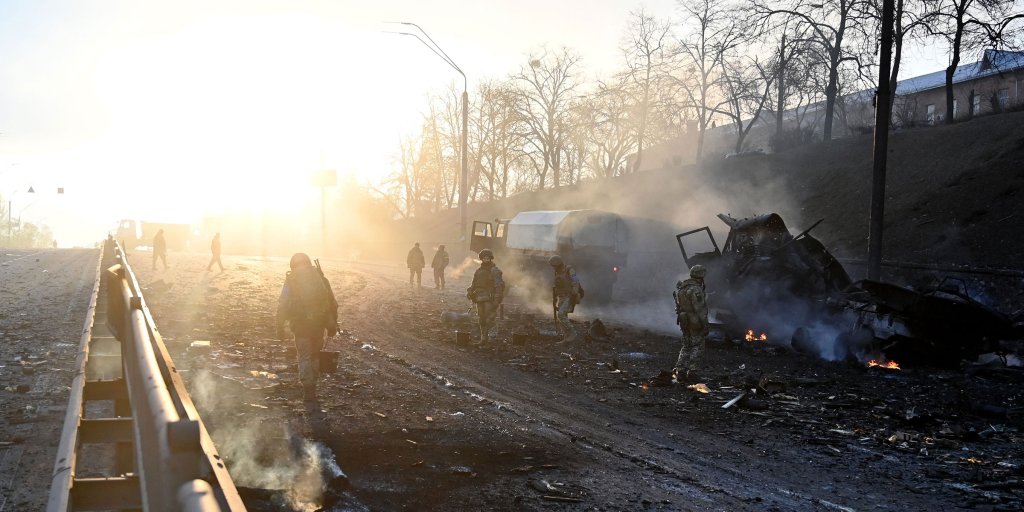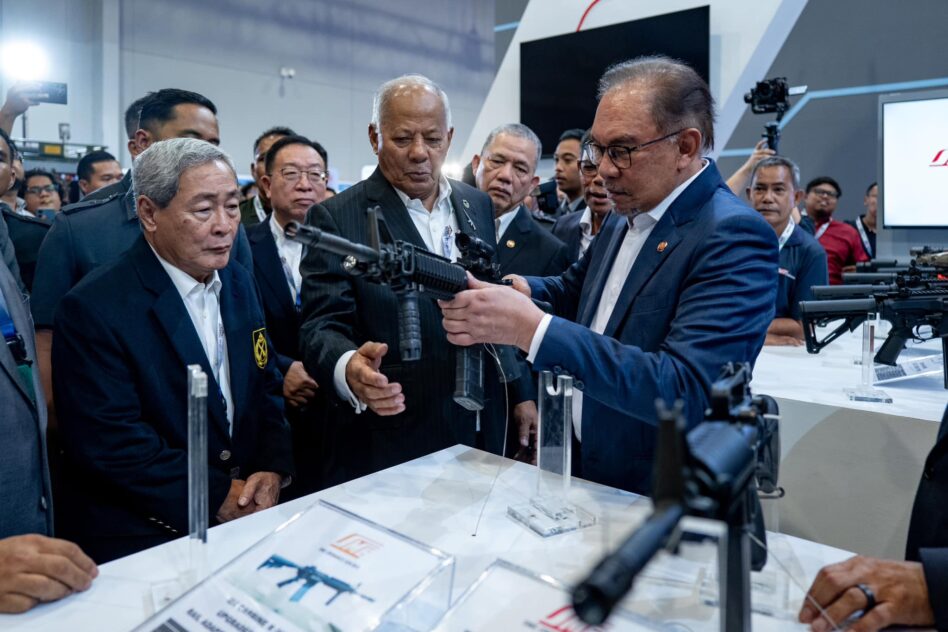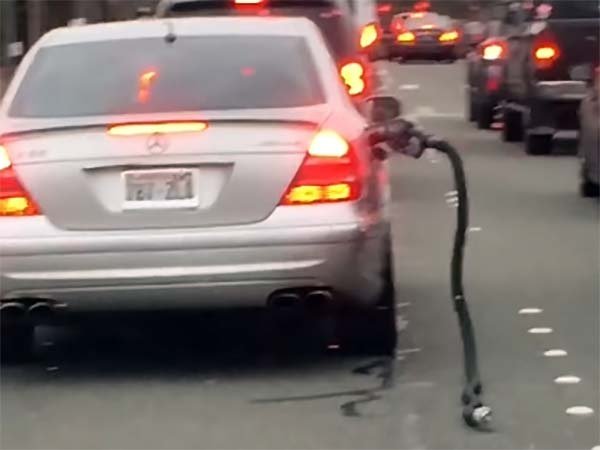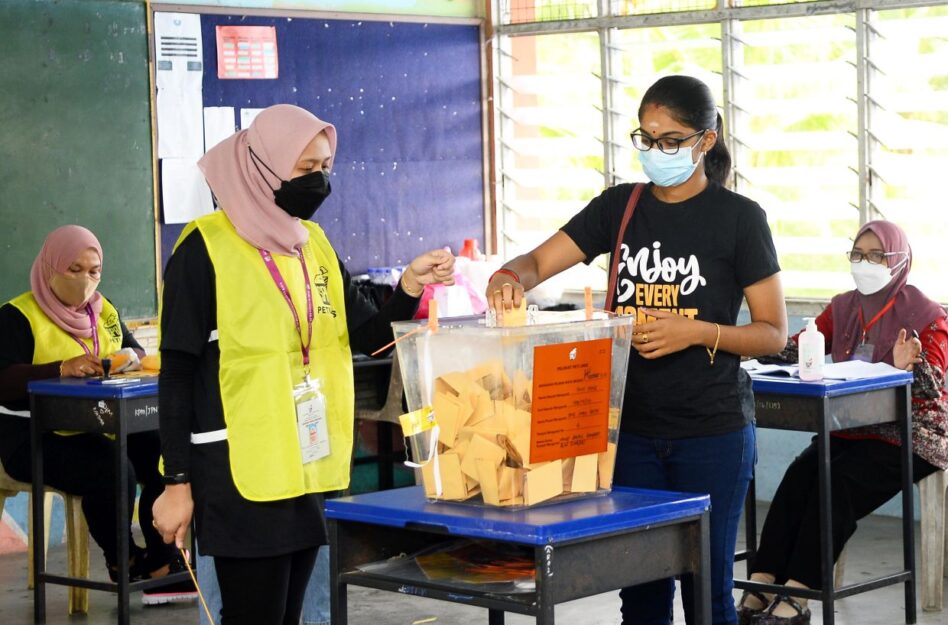IN a dramatic escalation of the Russia-Ukraine war, President Vladimir Putin ordered Russian nuclear deterrent forces put on alert on Feb 27 in response to what he called “aggressive statements” by leading NATO powers and punishing sanctions from the world’s wealthiest nations.
The move means Putin has ordered Russia’s nuclear weapons prepared for increased readiness to launch, raising the spectre that the tensions could boil over into a nuclear war.
This was just the first round. On March 5, Putin warned that Moscow would consider any country imposing a no-fly zone over Ukraine to have entered into the conflict, adding that global sanctions against Russia is tantamount to a declaration of war.
Ukrainian leader Volodymyr Zelenskiy has pleaded with the West to support a no-fly zone as his besieged country continues to resist Moscow’s invasion, now in its third week.
To NATO’s credit, it has rejected Ukrainian calls to help it protect its skies from Russian missiles and warplanes, wary of being dragged into Moscow’s war on its neighbour but Europe promised more sanctions to punish Putin.
The whole crisis has a parallel to some 60 years ago on October 1962 during the Cuban Missile Crisis.
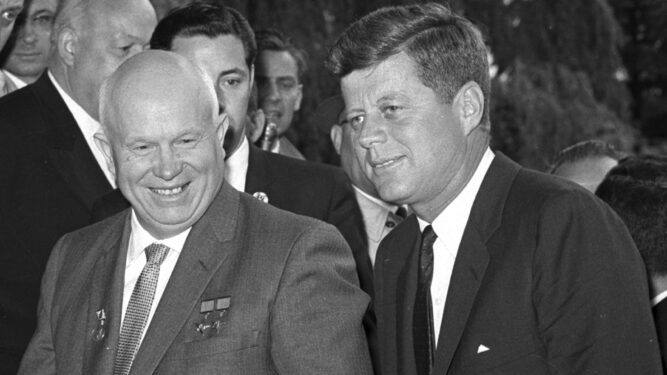
The protagonists then were the US (who seemed to be in a similar situation like Russia now because of the threat of a missile installation near its shores) and the Soviet Union who then seemed to be in a difficult position of whether to blink first (a similar predicament like the US now on whether to take on the Russian with a physical war), with Cuba then playing the role of Ukraine.
In that crisis, leaders of the US and the Soviet Union were engaged in a tense, 13-day political and military standoff over the installation of nuclear-armed Soviet missiles on Cuba, just 90 miles from US shores.
In a TV address, President John F Kennedy notified Americans about the presence of the missiles, explained his decision to enact a naval blockade around Cuba and made it clear the US was prepared to use military force if necessary to neutralise this perceived threat to national security.
Many feared then the world was on the brink of a nuclear war. However, disaster was averted when the US agreed to Soviet leader Nikita Khruschev’s offer to remove the Cuban missiles in exchange for the US promising not to invade Cuba.
Kennedy also secretly agreed to remove US missiles in Turkey. In this crisis, he invoked the Monroe Doctrine.
Although the Monroe Doctrine has evolved to mean different thing from when it was first enunciated by the fifth president of the US, James Monroe in 1823, by Kennedy’s time in simple term it means a concern about the security of one’s backyard lest intruders or those with sinister intentions loitering around may inflict some misfortunes on you.
Putin sees an existential threat to his country where in the wake of the demise of the Soviet Union, democratic and pro-West countries have mushroomed along the Russian border, joining NATO in droves.
With NATO membership came NATO military installations and missiles, coming closer to Moscow. In June 2020, Ukraine became a partner (if not a member) to NATO.
In Putin’s words, if missiles were to be installed in Ukraine, they could hit Moscow within 10 minutes, as there are no natural geological formations along the Russia-Ukraine border.
This is a very similar scenario painted by Kennedy in the Cuban Missile Crisis, the only difference is the missiles was already installed in Cuba, while in the present crisis the missile hasn’t been installed yet in Ukraine.
Kennedy’s bellicose attitude then was quite similar to Putin’s belligerency now in that both made it very clear they were prepared to use military force if necessary to neutralise this perceived threat to their national security.
Kennedy was saved from actualising his military threat to invade Cuba, courtesy of the magnanimity of Soviet’s Khruschev backing down in dismantling the missile installation in return for Cuba not to be invaded.
However, in the present crisis, there are no such magnanimous statesmen or leaders from the US, EU, UK, NATO, UN or even Ukraine who can give, in all magnanimity, a solid assurance to Putin that he should have no worries about missile installation in Ukraine should the latter become a member of NATO.
The current escalation has been decades in the making and there was never any quick fix. But when someone decided to draw a line in the sand years ago – NATO and non-NATO – those lines were created in anticipation of a conflict.

So by their words and deeds, escalation is actually in the mind of all the protagonists, not just Putin.
And to make matters worse, part of Ukraine along the Russian border has been held by pro-Russian separatists. These are Ukrainians of Russian descent.
Analysts are unanimous that the root of the present crisis went back to late 2013 when the then pro-Russian government of Ukraine under President Viktor Yanukovych was caught between a rock and a hard place.
There was a tussle for influence between Russia and the EU when Ukraine had asked for €20 bil (US$27 bil) in loans and aid.
The EU was willing to offer €610 mil (US$838 mil) in loans, but Russia was willing to offer more – US$15 bil, as well as cheaper gas prices. In addition, the EU demanded major changes to Ukraine’s regulations and laws, but Russia did not.
Hence, no surprise here when President Yanukovych refused to sign a political association and free trade agreement with the EU at a meeting in Vilnius, Lithuania, choosing closer ties with Russia instead.
This led to a wave of large-scale protests in November 2013 known as Euromaidan, which went on for months as a prelude to the Maidan Revolution in February, whose endgame was Yanukovych was deposed after he fled to Russia ahead of an impeachment vote, and sought Russia’s assistance.
Russia considered the overthrow of Yanukovych to be an illegal coup, and did not recognise the interim government.
There was also an episode of US involvement when in December 2013, Republican Senator John McCain in company with Democratic Senator Chris Murphy visited Ukraine to “campaign” on behalf of the US for Ukraine to seek its destiny in the West. This is the overt part of the US involvement.
The covert part became clear when in a recorded phone conversation leaked on Feb 4, then Assistant Secretary of State Victoria Nuland and US Ambassador to Ukraine Geoffrey Pyatt were heard discussing their wishes for a Ukraine transition to an interim government, and specifically, the roles in which they hoped to see prominent Ukrainian opposition leaders played.
So all these parties – Russia, the EU and the US – have had their hands muddied in the current Russia-Ukraine conflict. But it is Russia, which would have felt the consequence most because all these events took place on its backyard.
The US and EU wouldn’t dare to get involved had Russia had an equivalent Monroe Doctrine and if it was still a superpower then.
As for Ukraine, when you know your nearest neighbour was a former superpower and you had been under its rule during the Soviet regime, it is in your national interest to maintain good relations with your neighbour by being sensitive to its concern.
Policies like joining NATO should be weighed very carefully, and eliminating the Russian language as the official language when Ukrainians of Russian descent form a sizeable minority in your country was indeed very provocative.
Ukraine should have taken heed of the example of neighbouring Sweden and Finland in observing strict neutrality.
Nothing has stopped these two countries from having an excellent relationship with any democratic countries of the west including the US but they didn’t harped on becoming a NATO member.
If this sounds unbelievable, there are actually six EU member states, all who have declared their non-alignment with military alliances, and therefore are not NATO members: Austria, Cyprus, Finland, Ireland, Malta and Sweden.
Additionally, Switzerland, which is surrounded by the EU, has also maintained its neutrality by remaining a non-EU-member. – March 8, 2022
Jamari Mohtar is the Editor of Let’s Talk!, an e-newsletter on current affairs.
The views expressed are solely of the author and do not necessarily reflect those of Focus Malaysia.


